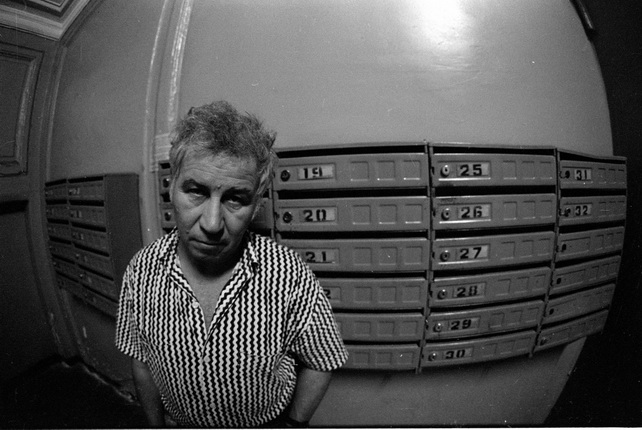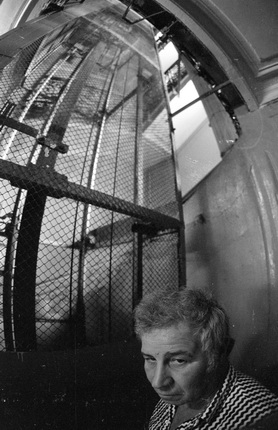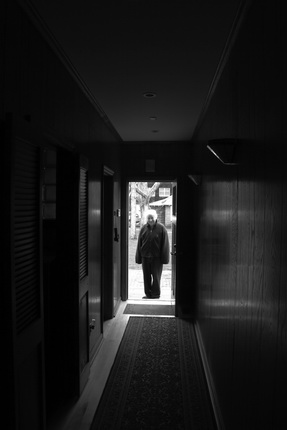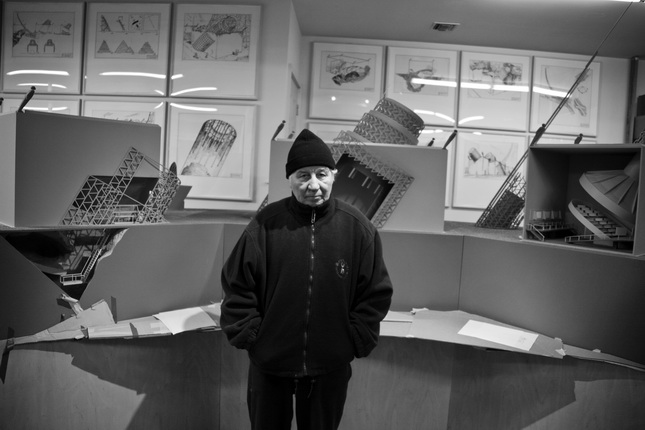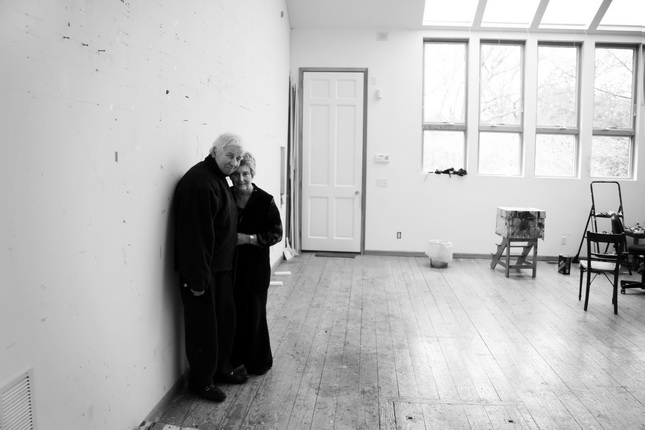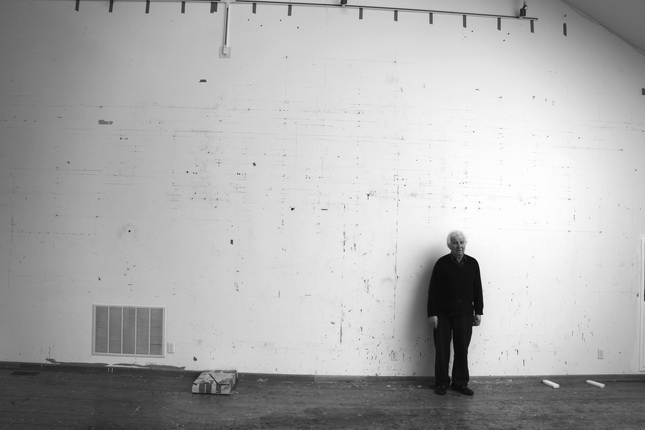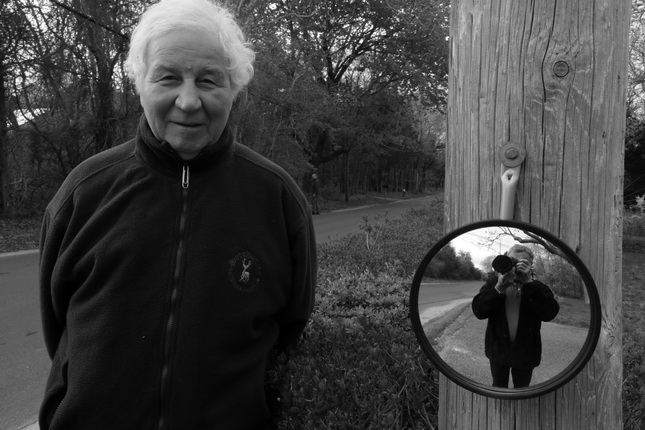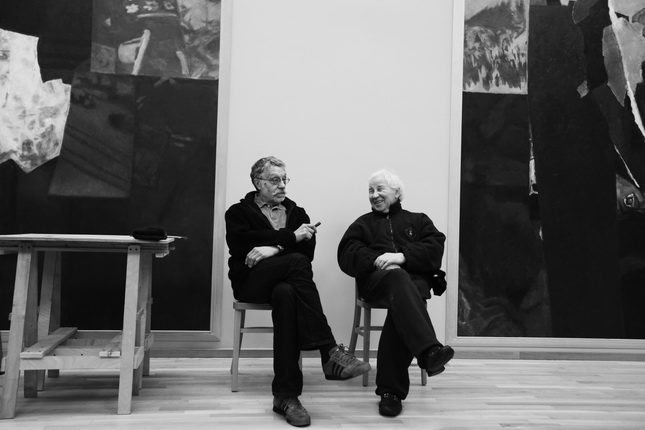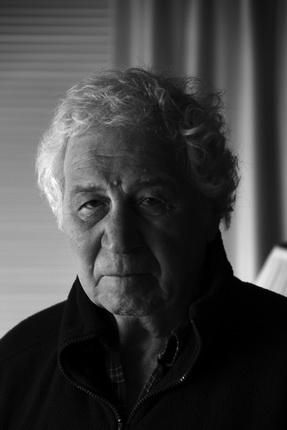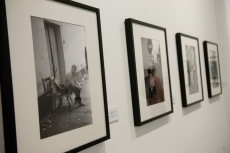Two Walks with Kabakov
Moscow, 17.09.2013—6.10.2013
exhibition is over
Share with friends
For the press
Ilya Kabakov is a witness of how we lived. It would be hard to believe that now (when much has changed), if we hadn’t gone on living just the same as before. Communal living, with garbage.
Some twenty-five years ago Kabakov sat in an attic studio in the Rossiya Insurance Company building, working from morning to night, dry-frying his ‘Mikoyan’ cutlets that consisted almost entirely of breadcrumbs (seven kopecks apiece) and occasionally venturing out for exhibitions, to look at works by fellow artists and comment ‘Excellent, excellent!’ — not as an appreciation but on the contrary, so he didn’t have to appreciate, discuss or dispute. He lived the internal life of a remarkably talented Akaky Akakievich, who found happiness not only in writing words, but in creating them. As if for himself alone. In fact (and who knows what’s really there) he was aware of his ability to create through a masterly distortion of scale a new, specifically Kabakovian metaphorical reality from the everyday, the unnecessary and incidental.
He lived in a country where day-to-day living supplanted conscious existence, survival supplanted life, elections supplanted choice, and happiness was a category dependent on age. ‘How young we were then...’ Meaning, how happy we were.
Ilya had no exhibitions or catalogues, but his art definitely belonged to the people. In any case, the words and phrases that were an essential part of his conceptual albums, objects, pictures and installations were understood by and familiar to the general population, for with extraordinary insight Kabakov took and strung out (sometimes literally, on threads) the banalities our citizens uttered in ordinary conversation. Understandable, familiar, but the meaning Kabakov instilled in them was outside the boundaries set for art by our socialist homeland and its multitudinous inhabitants.
He himself was outside the boundaries. A rabbit-skin hat, cheap Skorokhod-factory boots and a sweater in winter; sandals and viscose shirt in summer; soup, chopped beefsteak with mashed potatoes, compote... ‘Excellent, excellent!’ But his ambition and passion were equal to his talent.
He devised and planned projects unprecedented in the world of installations. Kabakov’s world was composed of spaces filled with irony and empathy for the degraded and emasculated Soviet man. He enriched the universal art space with his own world transported from the Soviet Union.
Today Ilya Kabakov is the most celebrated Russian artist of the modern age. Among the world’s most famous artists. He has acquired everything he planned and everything he deserved: opportunity; fame; a wife and fellow artist, Emilia Kabakov. (I was about to write ‘and freedom, too’, but thought better of it. Ilya was cautiously free in Moscow, not entirely free in New York.) He works in the same way as before — from dawn to dusk. The sweater, the boots, kind eyes narrowed in irony. Only now he smiles and says ‘Great!’ instead of ‘Excellent, excellent!’
And his achievement is undoubtedly great: an exhibition at the Hermitage, thick monograph catalogues of his famous installations. ‘The Red Wagon’ (Düsseldorf) — an artistic realisation of the country’s communist cycle. ‘The Red Pavilion’ (Venice), ‘The Ship’ (Lyon), ‘Graffiti on the Wall’ (project for the Reichstag), ‘Vertical Opera’ (for the Guggenheim Museum in New York), ‘The Red Corner, ‘The Big Archive’, ‘The Toilet’, ‘Concentration in the Closet’, ‘The Man Who Flew into His Picture’, ‘The Man Who Collects the Opinion of Others’, ‘The Flies’, ‘The Hospital’, ‘My Mother’s Album’, ‘The Empty Museum’, ‘The Centre of Cosmic Energy’, ‘The Communal Kitchen’...
‘...You can’t argue with everyone here, you’re no cleverer than anyone else here...’
‘...I wouldn’t argue, I’d just get a bucket and carry it outside... Just look what they’ve thrown there. Look, look.’
He has produced so much (I only counted a fraction of it)!
‘Ilya, my dear friend, what installations, all around us! Remember how we walked from my house on Chistiye Prudy to your studio on Sretensky Boulevard? And how twenty-five years later we took another stroll, now across Long Island, America, from your studio to your home (incidentally, in one and the same place), where Emilia had dinner ready for us. Great, wasn’t it?’
‘No.’
‘No?’
‘It was very good, Yuri.’
‘Excellent, excellent!’
Yuri Rost
This exhibition conceived and produced by my dear and longstanding friend Yuri Rost presents photographs taken over the two days we spent walking and talking from early morning to late evening. A vast distance of time and space separates these two days.
The first day was our Moscow walk in the summer of 1986, starting from Yuri’s house at the end of Chistoprudny Boulevard, where we drank tea from a samovar on his balcony surrounded by green June trees, and ending at the beginning of Sretensky Boulevard, at the threshold of the house where I had a studio.
As we walked we stopped every few minutes, for this route is essentially an encyclopaedia of artistic life from the late 19th to early 20th centuries: the VKhUTEMAS (Higher Art and Technical Workshops) courtyard and building (I unexpectedly became a student there in 1951), where Rodchenko, Pasternak’s father (and Pasternak himself), Kruchenykh and many others lived and taught... By the pond stands the Sovremennik Theatre, formerly the Colosseum Cinema, and we wandered between them, stopping by every house to reminisce about all those connected in one way or another with the golden age of Russian culture and with the present. We turned into the courtyards of buildings where E. Bulatov and O. Vasiliev had their workshops on an upper floor...
It was like a return to the 80s, when we thought nothing could change and we would always stay tied to this place, like the old mail boxes hanging in my entryway, covered in peeling blue paint, like the bust of Lenin in the VKhUTEMAS courtyard that was ‘renovated’ with a new coat of white paint before each public holiday.
Everyone living in this country thought as we did, but suddenly it all changed and what had seemed eternal vanished in an instant.
Now Yuri and I are on the other side of the world, and instead of me drinking tea on his balcony he is sitting here with Emilia and me, at our house in Long Island, and again we drink morning tea and go for a stroll. But here there is nothing to reminisce about (compared with all the memories on Chistoprudny and Sretensky Boulevards). Neat, modestly-sized American houses line the road, the bay stretches nearby and we no longer discuss the past, but the present situation in the art world, exhibitions, installations, the position of the artist here in the West...
Although the basic motif, the main subject of our conversation is what people who have come from one culture and find themselves in another actually feel, whether they can find a place in this new culture and if the new audience will understand the meaning and context they brought with them and from which they cannot part without losing their identity...
The immeasurable significance of this exhibition for me, for Emilia and myself, apart from the outstanding artistry of the photography, is the imprint of both periods in time recorded in these ‘time pictures’. Each and every viewer can perceive the basic ‘resonance’ of this atmosphere, the aura of life that my old and dear friend Yuri Rost was able to see and convey in these black-and-white images.
Ilya Kabakov

